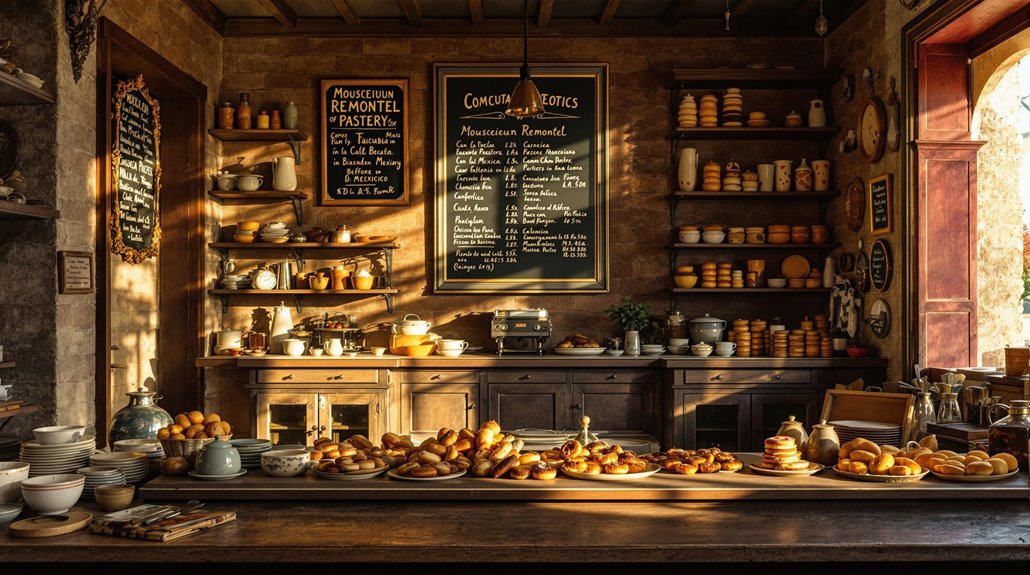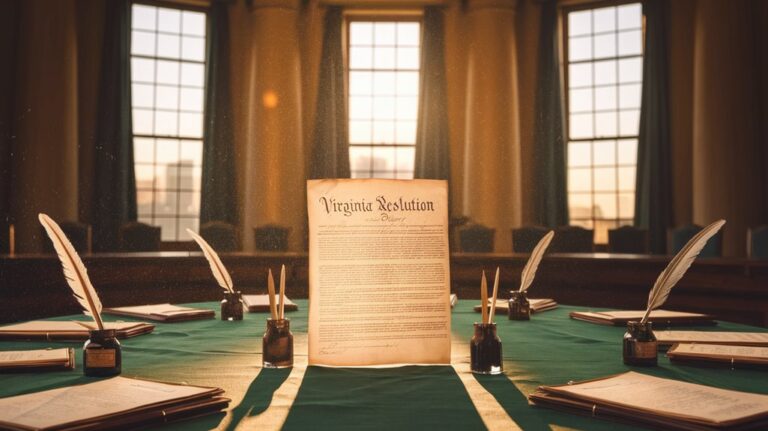France and Mexico Had a War Over Pastries
You've probably heard of wars starting over territory, resources, or political ideologies, but a war over pastries? That's exactly what happened between France and Mexico in 1838. When Mexican officers ransacked a French pastry shop, they had no idea they'd spark an international crisis that would lead to naval blockades and military confrontations. What began as a simple claim for damaged confections would ultimately cost Mexico far more than just sugar and flour.
The Sweet Shop That Sparked an International Crisis

When a humble French pastry shop opened its doors in Tacubaya in 1832, no one could have predicted it would trigger an international conflict.
You might wonder how pastry politics could escalate into a full-blown diplomatic crisis, but that's exactly what happened at Monsieur Remontel's establishment on the outskirts of Mexico City.
The French-owned shop quickly became a symbol of European refinement, attracting Mexico's elite with its delectable confections.
But in 1832, this culinary conflict began when Mexican army officers allegedly ransacked the store, destroying Remontel's inventory while confining him to a back room.
Taking advantage of the situation, King Louis-Philippe inflated the compensation claims to 60,000 pesos, far exceeding the actual damages.
What should have been a local criminal matter transformed into an international incident when Remontel's complaint reached French King Louis-Philippe, setting the stage for an unprecedented diplomatic showdown.
This incident would later serve as a convenient pretext for France to intervene in Mexican affairs.
A French Baker's Expensive Compensation Claim
The destruction of Remontel's pastry shop sparked a compensation claim that would strain Franco-Mexican relations for years. The French baker demanded 60,000 pesos from Mexico in 1832, an amount that was 60 times his shop's actual value.
When you consider Remontel's resilience in pursuing justice, it's remarkable how his personal grievance escalated into an international dispute. Mexican soldiers had looted and vandalized his establishment during a period of political unrest. The incident occurred during a time when Mexico was experiencing rapid leadership changes, with more than twenty different heads of state in power throughout the 1820s and 1830s.
After five years of failed attempts to secure payment locally, Remontel took his case to the French government. King Louis-Philippe seized this opportunity to address broader French grievances, demanding 600,000 pesos from Mexico.
The diplomatic negotiations that followed were tense, with Mexico's President Bustamante initially refusing to pay. When Mexico couldn't afford the full amount immediately, they proposed installments, but France rejected this offer until a British-mediated settlement was reached in 1839.
From Missing Pastries to Military Action
Since diplomatic negotiations had failed, France escalated its response to Mexico's refusal to pay reparations in 1838.
What started as pastry politics quickly transformed into a full-blown culinary conflict with serious military consequences.
You'll find these dramatic escalations particularly interesting:
- French warships blockaded Veracruz, Mexico's crucial Gulf port
- Mexico's President Bustamante declared war on France
- French forces bombarded San Juan de Ulúa fortress
- 30,000 French troops invaded Veracruz
- The French navy captured Mexican ships in the harbor
The conflict drew international attention, with the United States supporting the French blockade and Great Britain stepping in as a mediator. The dispute began when Monsieur Remontel's shop was raided by Mexican army officers, leading to his demand for compensation.
You'd be surprised to learn that this pastry dispute ultimately led to Mexico agreeing to pay the full 600,000 pesos, though France accepted trade commitments instead of war indemnities. By 1864, tensions between France and Mexico would escalate again when Maximilian and Charlotte arrived to claim the Mexican imperial throne.
Mexico's Battle Against the French Navy
During Mexico's darkest naval hour, French warships under Rear Admiral Charles Baudin's command positioned themselves along the Gulf coast in April 1838, launching what you'd call a crushing blockade of Veracruz.
Mexico's naval strategies proved ineffective against France's superior fleet, forcing them to rely on guerrilla warfare and smuggling operations through Corpus Christi. The economic impact was devastating as the French blockade cut off essential trade routes and imports across all Mexican Gulf ports. The dispute originated when a French pastry chef demanded 60,000 pesos compensation for his looted shop.
You'll find the conflict reached its peak when French forces bombarded and captured the fortress of San Juan de Ulúa in December 1838. The situation echoed the later French military intervention of 1862, when Napoleon III would again attempt to exert control over Mexico.
In a notable turn of events, Mexican leader Santa Anna lost his leg to French grapeshot during the battle. Despite declaring war and mounting resistance efforts, Mexico couldn't overcome France's maritime dominance until March 1839.
The Price of Peace: 600,000 Pesos

After months of naval blockades and costly battles, Mexico found itself forced to accept a steep price for peace: 600,000 pesos. The payment wasn't just about Remontel's damaged pastry shop – it covered a range of French demands that had serious economic implications for Mexico.
You'll find the 600,000 pesos settlement included:
- Compensation for French citizens' property losses
- Remontel's original 60,000-peso pastry shop claim
- Damages from civil disturbances
- Pre-existing Mexican debts to France
- Future trade commitments
The settlement created lasting diplomatic tensions between the two nations. Mexico's struggling economy couldn't handle the strain, especially after losing thousands of pesos daily during the blockade. The bombardment of San Juan de Ulúa by French forces had already demonstrated their military superiority. General Antonio Lopez de Santa Anna's leg was amputated during the conflict, ironically boosting his political career in Mexico.
When Mexico failed to make all payments, France used this as justification for their second intervention in 1861, keeping relations frozen until 1880.
The Legacy of a Peculiar War
While the Pastry War may seem like a trivial conflict, its impact on Mexican politics and international relations proved far-reaching.
Despite losing Texas, you'll find that Santa Anna's military strategies during this conflict actually restored his reputation, leading to seven more presidential terms. The political implications reshaped Mexico's government, exposing its vulnerabilities and inability to protect foreign nationals. Monsieur Remontel's shop and its looting by Mexican officers in 1832 became the unlikely catalyst for an international conflict.
You can trace many significant changes to this peculiar war: France's naval blockade crippled Mexican ports, diplomatic ties remained severed until 1880, and British mediation was required to broker peace.
The conflict's legacy extends beyond its humorous name – it set a precedent for future French intervention in Mexico and became a symbol of disproportionate diplomatic responses, influencing how foreign residents' grievances would be handled in Mexican politics.











